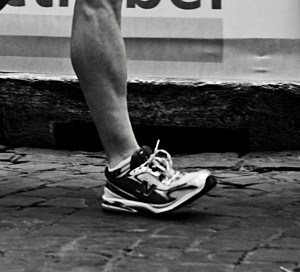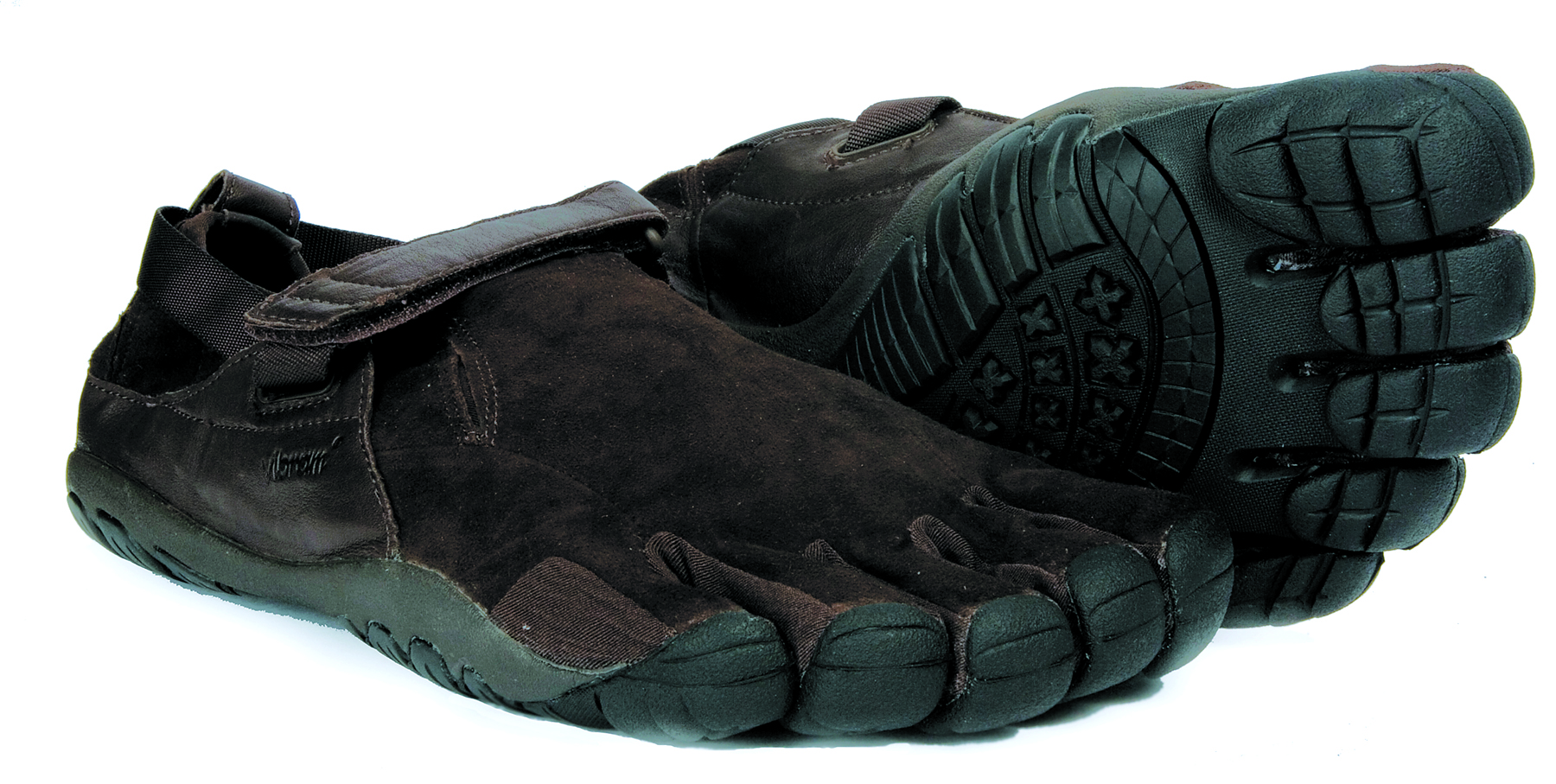For many years runners have donned their expensive running shoes before hitting the streets, the track or the treadmill to log their miles. Major shoe companies such as Nike, Aasics, Saucony and Adidas have profited from runners’ need for new shoes every 300-500 miles, and have continued to come up with new shoe technology to prevent injury and boost performance. New research, however, shows that highly cushioned running shoes may not be the solution to injuries and may in fact be the problem.
When runners put on shoes with cushioned heels and strong arch support, they are likely to strike with the heel of their foot. According to a Harvard study on “Biomechanics of Foot Strikes and Applications to Running Barefoot or in Minimal Footwear,” this can cause repetitive stress injuries. When the foot is bare, or sheathed in very minimal foot-wear, the foot will naturally strike at the midfoot, which significantly reduces the risk of injury.
When the foot is protected in layers of the newest technology of arch support, heel cushion and motion control, the muscles of the feet, legs and ankles are weakened because they don’t have to work as hard. The shoe takes the pressure off the muscles to protect your feet, but when the shoe is removed, the feet work harder to avoid the stresses and pressures of slapping against pavement and as a result become stronger.
Many runners have noticed that running with little foot support has reduced their run-ning-related pain and injuries, even chronic injuries. In Born to Run, Christopher McDougall writes that injuries had forced him to quit running. He was determined to figure out why an activity that was supposed to be healthy was causing him so much pain, and so he went to countless doctors, podiatrists and chiropractors, but no one could answer his question. He set off to find the Tarahumara Indians, the greatest distance runners in the world, and realized that the key to their continued success and health was that they ran the way they were created to run—with none of the fancy equipment, shoes, clothes or technology that modern runners rely on.

Critics of barefoot running argue that most runners who attempt to run barefoot aren’t world-class runners, and are actually doing more harm than benefit to their feet by running barefoot. They argue that the risks of stepping on sharp or harmful objects outweigh the benefits of running free when you are only running short distances at a slow pace.
Many runners, however, have argued that as soon as they took off their shoes, the injuries that had plagued them for years disappeared. Back pain, knee problems, plantar fasciitis and Achilles tendonitis have all been reportedly solved when runners have removed their shoes. Even runners who admit that they are not superstar athletes or haven’t run in years say that they have been able to run further and faster sans shoes.
For others, the benefit of losing the running shoes is the increase in speed. Even the lightest of running shoes add weight to the end of a runner’s legs, which causes the runner’s speed to be slightly compromised. According to the Harvard study, running barefoot has been proven to use 5 percent less energy than running in shoes. In a sport where every second matters, using 5 percent less energy really matters.
Although there are many benefits to running barefoot, there are also some risks. Running without protection exposes the feet to anything that may be lying on the sidewalk, including sharp rocks, glass, gum and cigarette butts. There may also be chemicals, fecal matter, dirt or bacteria, which could get into small cuts caused by the glass or rocks and cause infections. Minimal shoes, such as Vibram Five Fingers, offer protection from sharp objects while still allowing the runner to experience the feeling of running barefoot. Running in water shoes is a cheap alternative to Five Fingers and serve the same purpose.
When beginning to run barefoot it is important to take it easy, especially right away. When runners’ feet, legs, ankles and bodies are used to running with the protection and cushion of running shoes, it can be a shock to lose the shoes. Runners are advised to slowly work barefoot running into their routine until they are comfortable running without shoes.
For hundreds of years humans have run successfully with little or no footwear. It wasn’t until the 1970s that supportive running shoes were created, according to the Harvard study. Prior to the creation of the running shoe, people ran faster and longer and now many runners are determined to bring back the simplistic success of running barefoot.

If you want the closest thing to a barefoot feel, but still want some protection, you should try what I wear: Invisible Shoes sandals
They’re basically just a thin layer of rubber, kinda like the sandals in Born To Run.
I was thinking about getting some Invisible Shoe sandals. Good to hear that you like them. I was also looking at Stem Footwear–they seem pretty nice.
I want to express thanks to you just for bailing me out of such a issue. Just after surfing around throughout the search engines and getting advice which are not pleasant, I assumed my entire life was gone. Existing minus the answers to the issues you’ve resolved by means of your article content is a critical case, and ones that could have adversely damaged my career if I hadn’t encountered your website. Your own training and kindness in maneuvering all the pieces was helpful. I’m not sure what I would have done if I hadn’t encountered such a step like this. I am able to at this time look forward to my future. Thank you so much for the impressive and results-oriented help. I will not hesitate to endorse the website to anyone who wants and needs direction about this problem.
I want to express some thanks to the writer for bailing me out of this difficulty. Just after searching throughout the search engines and coming across advice which are not beneficial, I thought my life was over. Being alive without the presence of solutions to the issues you have sorted out as a result of your short post is a crucial case, as well as the ones that could have in a negative way affected my entire career if I hadn’t noticed your web site. Your actual ability and kindness in taking care of the whole lot was very useful. I don’t know what I would have done if I had not come across such a stuff like this. I’m able to now look ahead to my future. Thank you very much for this reliable and results-oriented help. I won’t think twice to endorse your web sites to any individual who should get recommendations on this problem.
When runners put on shoes with cushioned heels and strong arch support, they are likely to strike with the heel of their foot.And this is the benificial for our feets.
When runners put on shoes with cushioned heels and strong arch support, they are likely to strike with the heel of their foot,that is good for our fitness.
Pains have been associated with running especially when it is done with footwear, but lately, i was found out you can actually do your running barefooted not necessarily without a footwear but with one that considered your foot system and that can cause you no pain. Thanks also for the valuable information on your website